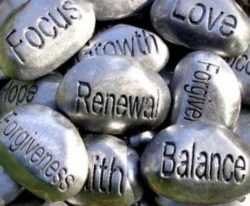A residential treatment program can become a safe space for many patients. It may feel scary going back to your home, job, or school. While in treatment, you have invested time working on your recovery and hopefully whatever environment you are returning to can foster a pro-recovery environment. Despite the environment, many patients have a few slips during the recovery process post-treatment. Toledo Center’s hope is that you have learned strategies to prevent those slips from becoming a relapse. These five tips are not all-inclusive, but they are some of the best strategies to ensure recovery.
Meal plan.
While in treatment you have learned how to meal plan and it most likely began to feel like a normal process towards the end of your stay. However, directly after treatment, meal planning may feel inflexible. It may be tempting to not follow your plan precisely or to completely stop planning. Rest assured that you will not have to meal plan forever to maintain your recovery. While the timeline differs for each individual as to when they can stop meal planning, patients who stick to their meal plan as ordered are less likely to relapse. Be open and honest with your outpatient therapist regarding your concerns with meal planning and create a strategy that works for both of you.
Connect with your outpatient treatment team regularly.
Before you leave residential treatment, you will have hopefully connected with an outpatient therapist and set up your first appointment post-treatment. Talk to your therapist to determine who else you should connect with to create a team of health professionals that advocate for your recovery. Often a team including a therapist, dietitian and primary care physician, all skilled in treating eating disorders, are highly beneficial for post-treatment care.
Utilize your team.
Connecting with a team of skilled health care professionals post-treatment is a vital part of recovery. Just as important, is connecting with a team of friends and family. Your tribe should include people that you feel comfortable talking to about your eating disorder, meal plan and urges. Take time to talk to these special individuals about the type of support you need. Ask your therapist if you can schedule a designated appointment for your tribe to help them understand your recovery
process and how they can help.
Define one self-care ritual and stick to it!
Stress is inevitable and it can make recovery more difficult. But you can combat stress by taking care of yourself and incorporating self-care into your daily routine. Self-care can look different depending on the individual. Do you enjoy reading, a nice hot bath, journaling, listening to music, meditation? These types of activities can be incorporated into your routine to help manage stress.
Know the difference between a slip and relapse.
A slip usually happens suddenly and may take you by surprise. Maybe you were having a particularly busy day and realized at 4:00 p.m. that you missed your afternoon snack. If you’re able to get right back to your planned meals and squeeze in the missed calories, consider that a slip. While a slip is still a setback, it’s much more minor than relapse. Relapse is when a slip turns into consistent eating disorder behaviors. To prevent this from happening, acknowledge a slip if it occurs. Call someone in your tribe or your therapist, if you are able to, so that they can help prevent guilt and shame that you may feel from your slip. These feelings will only exacerbate the problem. Focus on the progress you have made and brainstorm
solutions to prevent a future slip.
Make your own stoplight list.
How will you know when you are falling back into old eating disordered habits? By creating a personalized red, yellow and green flag list with the help of your therapist, you will have a written set of guidelines which will help you to recognize when you need to reach out for assistance. Look specifically at your own personal relapse cues and recovery behaviors and create a comprehensive list. Being sure to identify high-risk indicators that you are doing poorly (red flags), warning signs that you are slipping back into old habits (yellow flags), and signs that you are living a recovered lifestyle (green flags) is integral to keeping on track. Be sure to include both physical and emotional indicators of each.

